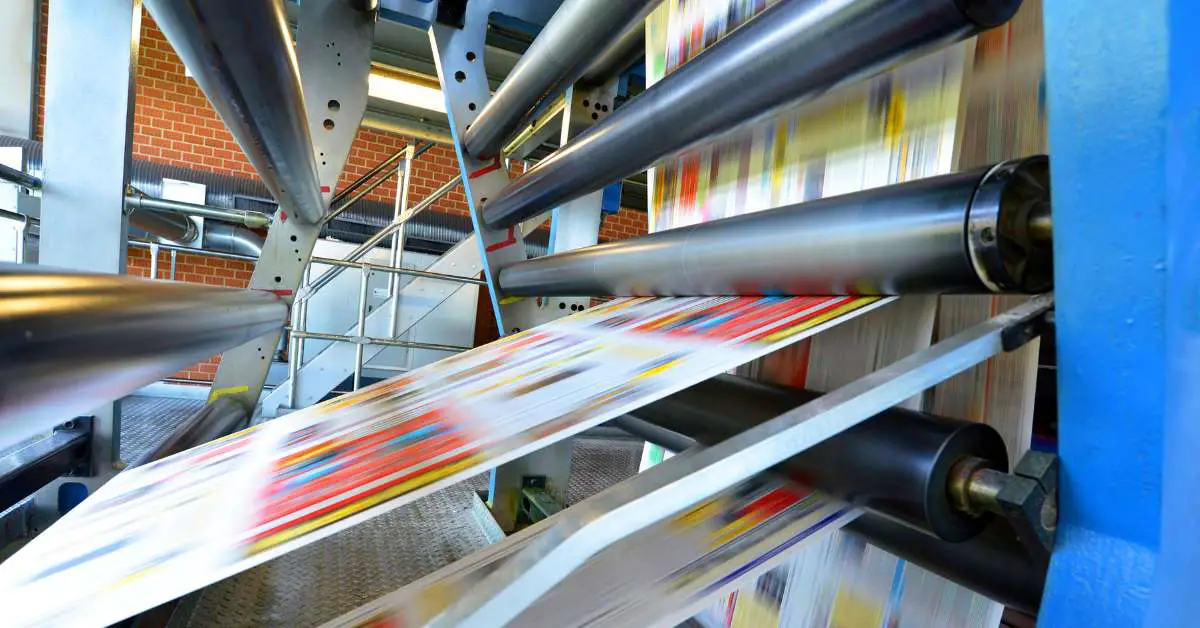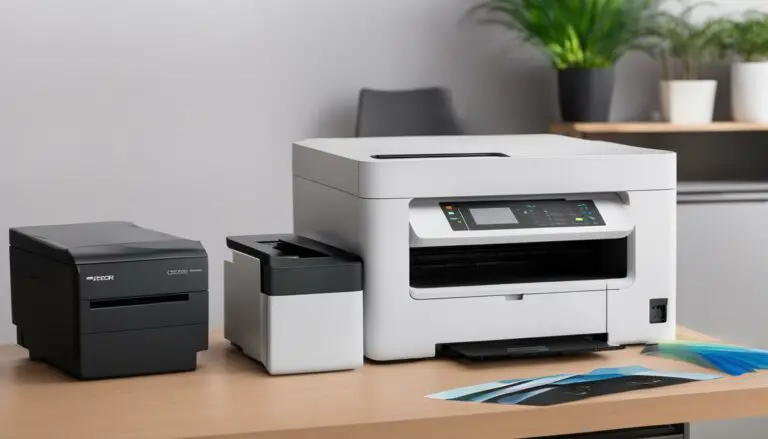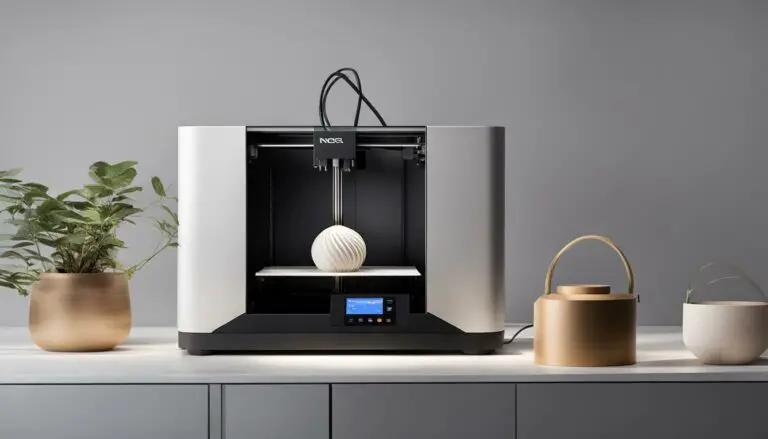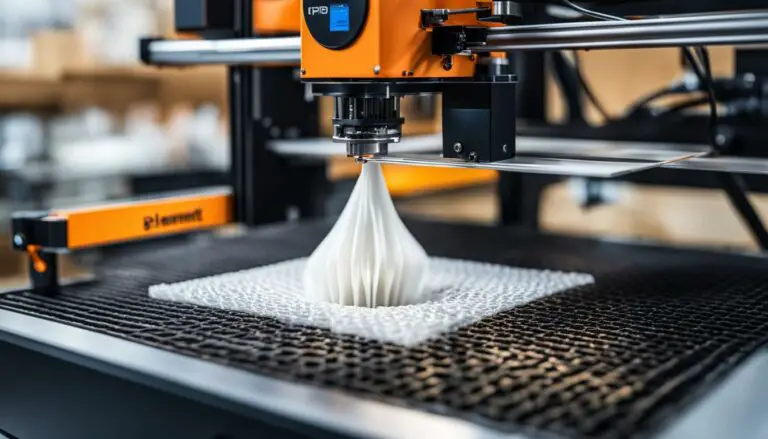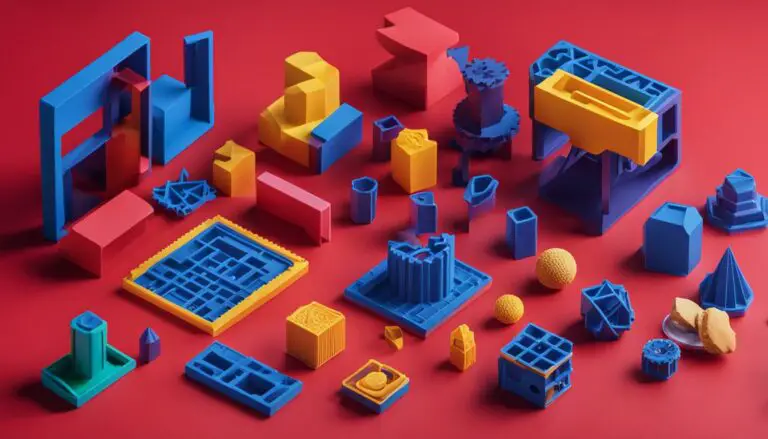Sublimation Color Problems: Troubleshooting Your Dye Sublimation Woes
Originally posted on August 17, 2023 @ 5:56 am
Sublimation printing offers a range of striking options, yet it is not uncommon for undesired variations in color to arise, ultimately affecting the end result’s excellence.
In this article, we talk about common sublimation color problems and issues that arise during the printing process. Whether it’s faded hues, color shifts, or unexpected tones, this guide will provide invaluable guidance to troubleshoot and rectify these challenges, ensuring your sublimation prints boast the vivid, accurate colors they deserve.
Read on to master the art of tackling sublimation color problems and elevating your printing outcomes.
What Are Some of The Most Common Sublimation Printing Problems? (The Short Answer)
Common sublimation printing problems include faded colors, color shifts, inconsistent prints, blurriness, and color bleeding. These issues can result from incorrect temperature and pressure settings, poor-quality materials, improper image preparation, or inadequate printer maintenance. Understanding these challenges is crucial for achieving vibrant, accurate, professional sublimation prints.
Why Is My Sublimation Not Printing Correct Colors?
If your sublimation prints are not displaying the correct colors, several factors could be at play. Some of the common ones are:
Inaccurate Temperature and Pressure Settings
A significant contributor could be inaccurate temperature and pressure settings during the sublimation process. Sublimation relies on precise heat and pressure to convert solid dye particles into a gas, which then bonds with the fabric. Deviations from the recommended settings can lead to color distortion, resulting in faded or off-tone prints.
Poor-Quality Materials
Another culprit might be poor-quality sublimation materials. Using subpar substrates or inks can yield unsatisfactory outcomes, as the dye sublimation process demands materials specifically designed to handle high temperatures and absorb dyes effectively.
Improper Sublimation Image Prep
Improper image preparation is also a potential issue. Images need to be in the correct color mode (CMYK), and the design should be adjusted to match the substrate’s properties. Failure to do so can cause color variations between blurry sublimation image of the intended design and blurry image of the final print.
Lack of Maintenance
Finally, printer maintenance is crucial. Clogged printheads or inconsistent ink flow can lead to uneven color distribution and blurriness in the prints. Regular cleaning and upkeep are essential for optimal results.
Also Read: DTF vs. Sublimation
Why Are My Colors Faded on Sublimation? Why Does My Sublimation Look Dull?
Faded colors in sublimation printing often stem from inadequate heat and pressure during the transfer process. Insufficient temperature or pressure prevents the dye particles from fully penetrating the substrate, resulting in muted colors. Not using the correct color correction program is another issue.
Additionally, using subpar sublimation materials or incorrect color profiles in your design can contribute to faded prints. To rectify this, ensure precise heat and pressure settings, invest in quality, polyester material coating material or polyester coating, sublimation papers, and calibrate your free sublimation designs with the substrate. Regular maintenance of your equipment to simply print also prevents faded colors by ensuring proper ink flow and printhead functionality.
Why Is My Sublimation Printer Printing Blotchy?
A blotchy print from your sublimation printer can be attributed to several factors.
Uneven Pressure Distribution
First, uneven pressure distribution during the transfer process might result in incomplete dye penetration, causing irregular color patches. This issue is often exacerbated by improperly adjusted pressure settings or unevenly aligned substrates.
Inconsistent Ink Flow in Sublimation Process
Second, clogged printheads or inconsistent ink flow print, can lead excess ink into areas of printed image on mug press with insufficient ink deposition, causing blotchiness. Regular maintenance and cleaning of the completely reusable printheads can mitigate this problem. Use of teflon sheet can also help prevent stray dyes and prevent inconsistency.
Poor Quality Sublimation Paper
Moreover, poor-quality sublimation paper or inadequate drying time or trap moisture can also cause blotchiness as the paper fibers absorb ink unevenly or fail to release it uniformly during the transfer. Lastly, incorrect color profiles (typically bright white) or low-resolution images can contribute to blotchy prints, as they may not accurately represent the intended design.
Can You Overheat a Sublimation Tumbler? What Happens if You Overheat Sublimation?
Yes, you can overheat a sublimation tumbler. Overheating can lead to issues like color shifts, distortion of sublimation design, and even damaging the substrate or sublimation design. Sublimation relies on precise temperature and time to convert dye particles into gas for bonding.
Exceeding recommended temperatures can cause colors to appear skewed, and excessive heat might distort the design or cause the substrate to warp. Moreover, over time, extreme heat can affect the durability and longevity of the sublimated image. Adhering to proper temperature guidelines is crucial to achieving accurate and vibrant sublimation results while preventing potential damage.
Why Is My Sublimation Printer Not Printing Anything? Why Is My Sublimation Printer Not Printing Correctly?
If your sublimation printer is not printing anything or is not printing correctly, several factors could be causing the issue.
- Sublimation Ink Supply: Check if your printer has enough ink in all the cartridges. Empty or low ink levels can lead to no printing or incorrect colors. Printheads can get clogged over time, blocking ink flow. Run printhead cleaning cycles to clear any clogs. you can contact the ink manufacturer for replacement.
- Driver or Software Issues: Ensure your printer driver and software are up to date. Outdated or incompatible software can cause printing problems.
- Incorrect Settings: Verify that you have selected the correct paper type, color profile, and other settings in your print dialog box.
- Paper Jam or Misfeed: Check for any paper jams or misfeeds that might be preventing the paper from advancing properly.
- Connection Problems: Make sure your printer is correctly connected to your computer monitor or network. A loose connection can disrupt printing.
- Maintenance Required: Some printers require periodic maintenance, like replacing maintenance kits or cleaning components to reduce excess moisture. Ignoring these tasks can lead to printing issues.
- Image Resolution or Format: If you’re trying to print a low-resolution image or an unsupported file format using converted printer, it might not print correctly.
- Substrate Compatibility: Ensure you are using substrates (paper, fabric, etc.) that are compatible with sublimation printing. Unsuitable materials can lead to poor printing results – one of the common sublimation mistakes.
- Calibration and Alignment: Improper calibration or misalignment of printheads can result in incorrect printing on new blank transfer.
- Temperature and Pressure: If you’re printing onto sublimation substrates, incorrect temperature for heat transfer or print settings and pressure settings can cause poor transfer of the dye.
Troubleshoot each of these potential issues systematically to identify and rectify the problem with your sublimation printer’s printing.
Why Are My Sublimation Tumblers Turning Brown?
Sublimation tumblers turning brown with small dots can be attributed to various factors. One primary cause is excessive heat exposure during the process. High temperatures on heat strips can cause the sublimation ink to shift, leading to color distortion and a brownish hue.
Additionally, inadequate pressure or incorrect transfer settings might result in incomplete ink transfer, affecting color accuracy. Poor-quality sublimation materials or substrates that can’t handle the heat might also contribute to the issue. To prevent brown discoloration, ensure proper temperature, pressure, and timing, use suitable substrates, and follow recommended guidelines for sublimation printing.
How Do You Make Sublimation Colors More Vibrant?
To make sublimation colors more vibrant, follow these steps:
Ensure Optimal Settings
Ensure the correct temperature, time, and pressure settings for your specific substrate to avoid sublimation issues. Proper settings prevent color distortion and ensure vibrant results. Calibrate your monitor and computer screen ensure your design is in CMYK color mode to match the process. Similarly an icc profile can help color accuracy.
Use Quality Inks and Paper
Use high-quality sublimation ink and paper designed for your printer. Premium materials enhance color vibrancy and clarity. Use butcher paper to prevent leaks.
Image Resolution
Use high-resolution images to maintain color detail and vibrancy in the sublimation print. Adjust your design to suit the substrate’s properties, optimizing color representation.
Do Regular Printhead Maintenance
Regularly clean and maintain sublimation print heads to ensure consistent ink flow and color deposition. Use the head cleaning function on Epson printers from time to time.
What Settings Should My Epson Printer Be On for Sublimation?
For optimal sublimation printing with an Epson printer or Sawgrass printers, follow these general settings that sublimation requires:
- Color Mode: Set your design to CMYK color mode for accurate sublimation color representation. An Icc profile can also help.
- Resolution: Choose a high-resolution setting (300 DPI or higher) to maintain image detail.
- Paper Type: Select the appropriate sublimation paper type in your printer settings. If needed, use butcher paper to prevent leaks.
- Printer Driver: Use the manufacturer-recommended sublimation driver or ICC profiles for accurate color rendering.
- Temperature and Pressure: Refer to your specific sublimation paper and substrate guidelines for correct heat press settings.
- Image Preparation: Ensure your design matches the dimensions of the substrate to avoid distortion during transfer to sublimation blank.
Always consult your sublimation print manual and the sublimation printing paper and ink manufacturer’s recommendations for precise settings tailored to your equipment, sublimation blank, and materials.
Why Is My Sublimation Transfer Not Working? Why Is My Sublimation Not Transferring Ink?
A sublimation transfer might not work for several reasons.
Incorrect temperature, pressure, or time settings during the heat press process can lead to incomplete dye sublimation, resulting in faded colors or poor image transfer. Using low-quality sublimation materials or substrates not designed for high heat can yield unsatisfactory results. Improperly prepared or low-resolution images can also affect the transfer’s quality.
Printhead clogs, outdated drivers, or connectivity issues could disrupt the printing process. To address these sublimation transfer problems, ensure proper settings, use quality materials, prepare images correctly, and maintain your equipment for successful sublimation transfer.
How Do You Stop Sublimation From Fading?
To prevent sublimation blanks from fading, follow these steps:
- Quality Materials: Use high-quality sublimation inks, paper, and substrates. Inferior materials can lead to faster fading.
- Optimal Settings: Ensure accurate temperature, pressure, and time settings during the process. Correct settings help achieve lasting color vibrancy.
- Image Preparation: Use high-resolution images and proper color modes (CMYK) to maintain color accuracy.
- Proper Washing: Wash sublimated items gently with a mild detergent in cold water. Avoid abrasive cleaners or harsh washing methods that can cause color degradation.
- Minimize Sunlight Exposure: Minimize prolonged exposure to direct sunlight, as UV rays can accelerate fading.
- Storage: Store sublimated items away from direct sunlight, moisture, and extreme temperatures.
By using top-quality materials, following precise settings, and practicing proper care, you can extend the longevity of your sublimation blanks and prevent fading.
Do Sublimation Printers Get Clogged?
Yes, sublimation printers can get clogged (clogged print head nozzles). It is one of the common sublimination printing problems. Over time, dried ink or dust particles can accumulate in the printheads, leading to reduced sublimation ink flow and distorted printing. Clogs can cause uneven color distribution, streaks, or even complete printing failures.
Regular maintenance, including printhead cleaning cycles and using the printer consistently, can help prevent clogs. Some printers also have features like automatic cleaning routines to mitigate clogging issues. Using high-quality sublimation ink and properly storing your printer and transfer paper when not in use can further minimize the risk of clogs.
FAQs
How do I get the best print quality with sublimation?
You can get superior sublimation print quality by using high-resolution images, premium sublimation inks, and quality substrates, while meticulously following optimal temperature, pressure, and time settings during the transfer process. Use silicone treated sheets on the pressing pad as that is how sublimation works.
Why is my sublimation not printing on my shirt?
Your sublimation might not print on the cotton shirt due to incorrect temperature, pressure, or time settings or other printer settings during the heat press process, inadequate or missing ink coverage, or using sublimation printing materials incompatible with the sublimation blank fabric. You can also use heat resistant tape or adhesive spray and lint free cloth (using lint roller) for better adhesion to sublimation shirt.
Why is my Epson printer not printing color?
Your Epson printer might not be printing color due to low ink levels in color cartridges or clogged heat press printheads. Ensure sufficient ink and perform printhead cleaning to resolve the issue and bring about color correction.
Why is my Epson sublimation printer not printing the correct colors?
This is a common sublimation issue. Your Epson sublimation printer might not print the correct colors due to incorrect color profiles, settings, sublimation tutorials, or low-quality sublimation inks. Verify settings, use proper profiles, sublimation blank, and ensure high-quality inks for accurate color correction.
Why does my sublimation look faded on paper?
Your sublimation might appear faded on paper due to insufficient heat and pressure during the transfer process, preventing proper ink penetration. Inadequate ink transfer paper immediately results in faded colors bright white or yellow shading and a lack of vibrancy in previously transferred image.
How do I make my sublimation color more vibrant? How do you brighten sublimation ink?
To enhance sublimation color vibrancy, ensure accurate temperature, pressure, and time settings during the sublimation coating heat press transfer process. Opt for quality sublimation materials and adjust your sublimation design’s color saturation through print manager for brighter results.
How do you make sublimation brighter on tumblers?
To make sublimation brighter on tumblers, ensure optimal heat press and pressure settings during the transfer, use high-quality sublimation inks and paper, and consider pre-coating the substrate cool the tumbler with a polymer spray designed for sublimation.
How do you make sublimation not fade?
To prevent sublimation from fading, use top-quality materials, follow accurate transfer settings, and avoid exposing the item to direct sunlight or harsh washing methods. Proper care and maintenance will help extend the longevity of sublimated prints.
Conclusion
In the world of sublimation printing, color problems can dampen the excitement of creating vibrant designs. However, armed with the knowledge of common issues and effective troubleshooting, you’re well-equipped to overcome these challenges.
By fine-tuning your techniques, from precise settings to quality materials, you can ensure that sublimation issues and color problems become a thing of the past. Your designs will shine with the true vibrancy and accuracy they deserve, leaving you with professional-quality prints that captivate and impress.

